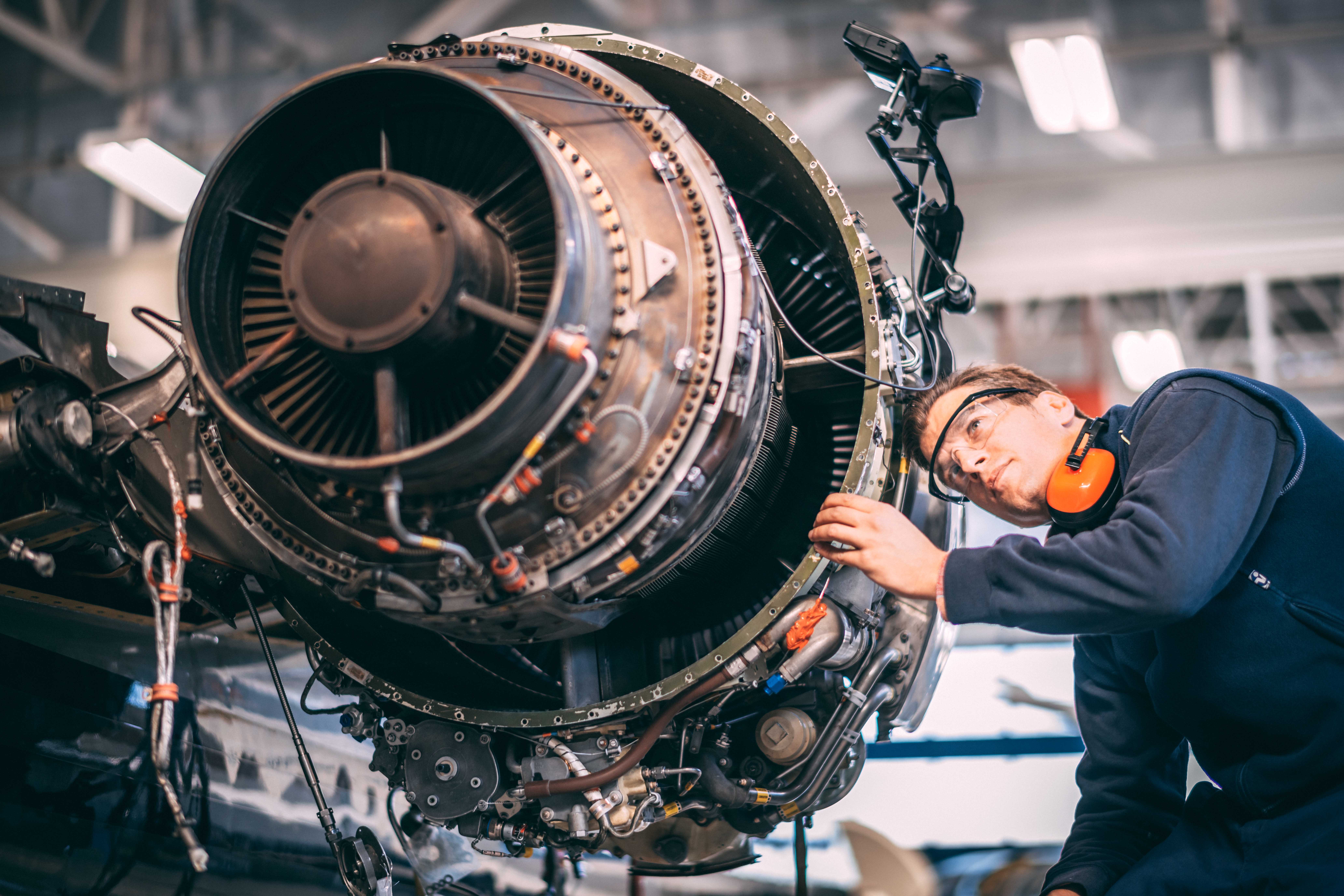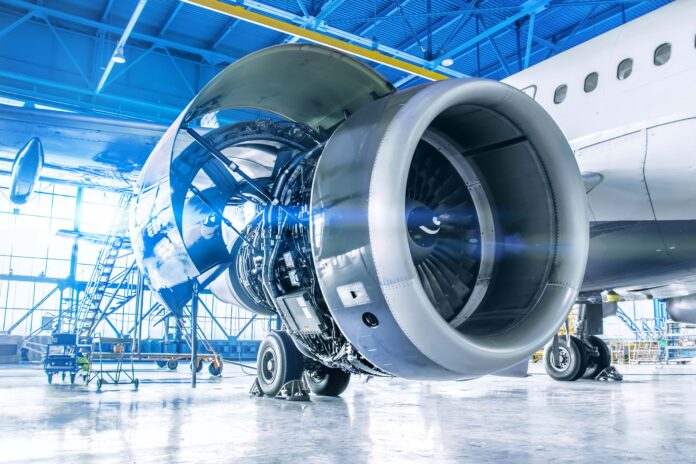Maintenance in industries is crucial for ensuring the smooth operation of equipment and machinery. Regular maintenance helps to prevent breakdowns, reduce downtime, and extend the lifespan of equipment. It involves tasks such as routine inspections, lubrication, repairs, and replacements of parts. Proper maintenance also helps to ensure the safety of workers and the quality of products being produced. Neglecting maintenance can lead to machinery malfunctions, production delays, and costly repairs. Therefore, investing in a comprehensive maintenance program is essential for the efficient and effective operation of industries.
Type of maintenance strategy
Reactive Maintenance (RM)
Means fixing things only when they break down, to cut costs in financially tight situations. But this approach can result in expensive delays in production later on. It works well for equipment that isn’t crucial or that doesn’t cost a lot.
Reactive Maintenance Reactive maintenance, also known as run-to-failure, involves repairing assets only after they have failed. When production stops, the plant supervisor will use available resources to arrange for repairs. This approach may be chosen to save money, as other maintenance methods may be viewed as too costly for a financially strained operation. Although reactive maintenance can appear cost-effective in the short term, it is not a viable long-term solution for repairable assets. If a major failure occurs, it can lead to unnecessary production delays that may cost more in lost time than it would have to implement a proactive maintenance strategy from the beginning. Despite its limitations, reactive maintenance is justifiable.
Preventive maintenance (PM)
Is a maintenance approach that aims to reduce downtime and lengthen the life of machinery in a cost-effective manner. Just like regular servicing for cars, PM is carried out on a set schedule based on either time or usage, in line with the manufacturer’s recommendations. While PM has proven to be effective, it does have its downsides. For example, it may lead to premature replacement of parts that are still in good condition. There is also the risk of unexpected issues cropping up in between scheduled maintenance visits, resulting in sudden downtime and increased expenses. Nevertheless, PM remains highly beneficial for upkeeping low to medium-priority assets that would otherwise incur higher repair costs for many organizations.
Predictive maintenance (PdM)
Is a strategy used to avoid equipment breakdowns by analyzing data to forecast when maintenance should occur. This method involves examining past data, monitoring in real-time, and utilizing machine learning algorithms to recognize patterns that signal when a part is at risk of failure. By utilizing this information, maintenance can be timed effectively to lower the chances of unforeseen malfunctions and decrease downtime.
Extending Predictive maintenance in the aircraft industry
Equipment breakdowns that happen unexpectedly can be a huge problem for any business, leading to higher expenses and lower efficiency. Fortunately, the development of predictive maintenance has provided companies with an effective solution to avoid these issues. Through the use of sensors, sophisticated data analysis, machine learning, and AI technology, businesses are now able to anticipate and address equipment malfunctions before they happen, resulting in less downtime and greater productivity.
In the aviation industry, predictive maintenance plays a crucial role in ensuring the safety and reliability of aircraft. With thousands of components working together to keep an aircraft in the sky, the ability to predict when maintenance is needed can be a game-changer. By monitoring critical systems and components, airlines can detect potential issues before they escalate into costly repairs or, even worse, accidents.
One of the main reasons predictive maintenance is crucial in the aircraft industry is the impact that unexpected maintenance can have on operations. Aircraft are expensive assets that require meticulous maintenance to ensure they are safe to fly. By implementing predictive maintenance systems, airlines can reduce the risk of unexpected failures and plan maintenance activities in advance, minimizing disruptions to their operations.
Additionally, predictive maintenance can help airlines optimize their maintenance schedules and avoid unnecessary downtime. By identifying when components are likely to fail, airlines can schedule maintenance during off-peak hours or when the aircraft is not in operation, reducing the impact on their flight schedules. This proactive approach can also help airlines save on maintenance costs by preventing failures that require costly repairs.
How Predictive Maintenance Works in Aviation
In aviation, predictive maintenance uses advanced technologies like IoT, AI, ML, and data analytics to analyze data from aircraft systems. IoT sensors monitor crucial parameters and send real-time data to a centralized platform for analysis. AI and ML algorithms identify patterns and potential issues, allowing for proactive maintenance instead of reactive or scheduled approaches. This results in more efficient processes, reduced downtime and costs, and improved safety and reliability. Learn more about the benefits of predictive maintenance in aviation in the following section.

Steps to Implement Predictive Maintenance
Assess current maintenance procedures
To improve your current maintenance procedures, start by evaluating how things are currently being done. Identify any aspects that may need adjustments or enhancements. Keep an eye out for any persistent problems or common trends that could benefit from predictive maintenance techniques.
Collect and analyze data
Use the large amount of data collected from aircraft sensors, maintenance logs, and historical records to discover trends and patterns that may signal impending failures. Employ data analytics software to efficiently process and examine this information.
Implement predictive maintenance software
Looking into investing in specialized predictive maintenance software for aviation purposes can greatly benefit your operations. This tool enables real-time monitoring and analysis of data, predicts possible failures, and efficiently schedules maintenance tasks.
Establish maintenance thresholds
Establish maintenance thresholds for important components and systems using both historical data and recommendations from the manufacturer. By setting these thresholds, we can more accurately predict when maintenance needs to be done, thus preventing potential failures.
Implement condition monitoring
Use sensors and monitoring devices to keep an eye on crucial parts like engines, landing gear, and avionics systems. This will aid in identifying any unusual activity or potential issues before they escalate.
Utilize predictive analytics
Utilize cutting-edge predictive analytics methods like machine learning and artificial intelligence to predict possible equipment failures and prioritize maintenance activities. This approach can improve maintenance efficiency and minimize operational disruptions.
Keep an eye on and improve
Consistently observe how well your predictive maintenance plan is working and make changes when necessary. Regularly assess key performance indicators, such as maintenance expenses, downtime, and equipment dependability, to make sure the plan is providing the anticipated advantages.
Benefits of Predictive Maintenance in Aviation
Increased aircraft safety and reliability
Reduction in unexpected breakdowns and maintenance costs
Improved operational efficiency and on-time performance
Increased overall aircraft lifespan
Enhanced fleet management and scheduling
Minimized downtime for maintenance and repairs
Enhanced decision-making with access to real-time data and analytics
Improved customer satisfaction by preventing flight cancellations or delays
We should consider that implementing predictive maintenance in aviation faces several challenges, including tackling data privacy concerns, assembling a skilled team, and handling associated costs efficiently that these challenges should be addressed with appropriate solutions.
Some examples of utilizing sensors for aircraft maintenance include:
Engine Monitoring
Sensors are used to continuously monitor engine performance and detect anomalies in vibration, temperature, or pressure that could signal potential failures.
Landing Gear Health
Sensors installed in the landing gear assembly assess the condition of components, allowing for early detection of wear and tear or other issues.
Hydraulic Systems Monitoring
Data from sensors is analyzed to maintain optimal hydraulic system performance and anticipate issues like leaks or pressure loss.
Structural Integrity
Advanced sensors and imaging technology are used to detect structural issues like corrosion or cracks, enabling proactive maintenance.
Conclusion
Predictive maintenance is transforming the aviation industry by equipping airlines and maintenance providers with the capability to forecast maintenance requirements and reduce downtime. Through the utilization of data analytics and machine learning, airlines can preemptively pinpoint potential problems before they develop into expensive repairs or accidents. As the number of air travelers rises, the significance of predictive maintenance in safeguarding the security and dependability of aircraft is paramount. Airlines that adopt this forward-thinking strategy can expect lower maintenance expenses, enhanced operational productivity, and heightened passenger contentment.
